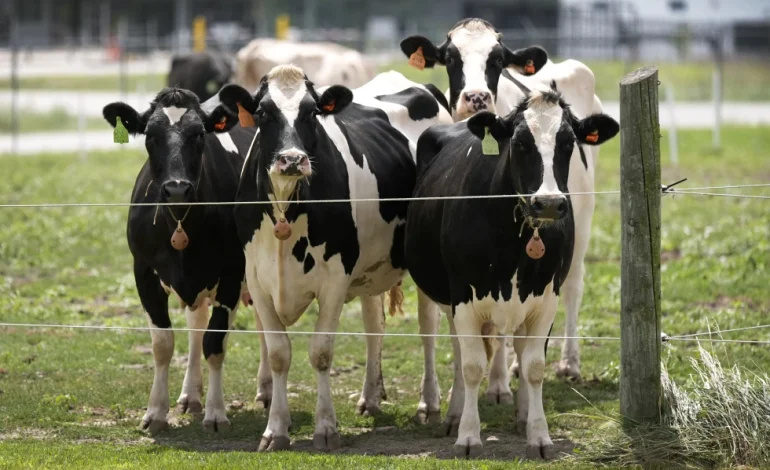Dairy cows in Nevada have recently been found infected with a new strain of bird flu, distinct from the version that has been circulating in US herds since last year, according to officials from the US Department of Agriculture (USDA).
The discovery of this new strain adds complexity to the ongoing spread of avian influenza in the country and raises concerns about the virus’s impact on both animals and humans.
The bird flu virus in question is a type of H5N1, which has now infected cattle on at least two separate occasions. The new variant, identified as D1.1, was detected in milk samples collected as part of a USDA surveillance program that began in December. This finding suggests that the virus, which is typically transmitted from wild birds to livestock, may be more adept at crossing species barriers than initially understood.
Previously, experts believed that bird-to-cow transmission of bird flu was a rare occurrence. However, the detection of the D1.1 strain in Nevada suggests that the virus may pose a greater risk to cattle than originally thought. Richard Webby, an influenza expert at St. Jude Children’s Research Hospital, expressed surprise at the new findings, stating that this raises important questions about how bird flu spreads in animals and how it might continue to affect livestock.
This new version of H5N1 is different from the strain (B3.13) that has been circulating since late 2023, which has already infected over 950 herds across 16 states. Both versions of the virus have the potential to affect farmworkers and others who come into close contact with infected animals, raising concerns for public health, particularly as the virus has been shown to cause severe illness in humans. In January, a Louisiana resident died after contracting the virus, and a teen in Canada was hospitalized for months due to a severe infection linked to the D1.1 strain.
Experts like Angela Rasmussen, a virus specialist at the University of Saskatchewan, emphasize the importance of ongoing testing to better understand how the virus spreads and its potential impact on both animal and human health. The recent identification of the D1.1 strain in Nevada serves as a reminder of the unpredictable nature of the virus and its potential to evolve in ways that could have serious consequences for both animals and humans.
The USDA is expected to release further genetic data on this new strain in the coming days, which could offer more insight into how long the D1.1 virus may have been circulating and whether it has been a persistent risk for livestock. As scientists continue to monitor the situation, the discovery of a second strain in dairy cows highlights the challenges of controlling avian influenza in both animals and humans, with many still questioning how widespread the virus may be and what further precautions may be necessary to protect public health.
While there is currently no immediate change in the overall risk to the general public, experts agree that continued vigilance is crucial. The spread of bird flu has already had significant effects on US poultry and dairy industries, contributing to higher food prices and heightened concerns about public health.
The Associated Press, the New York Times, and the Washington Post contributed to this report.








